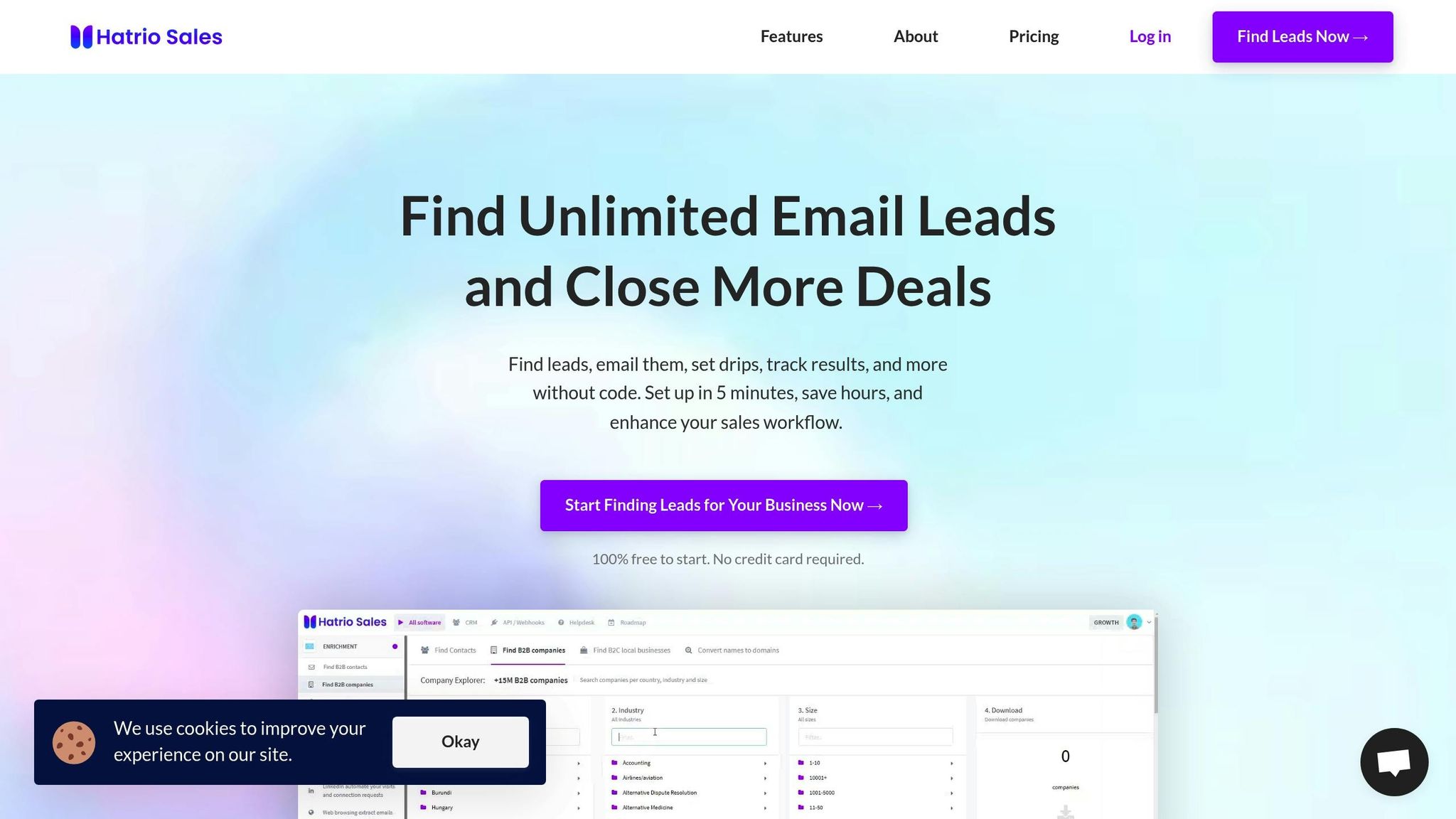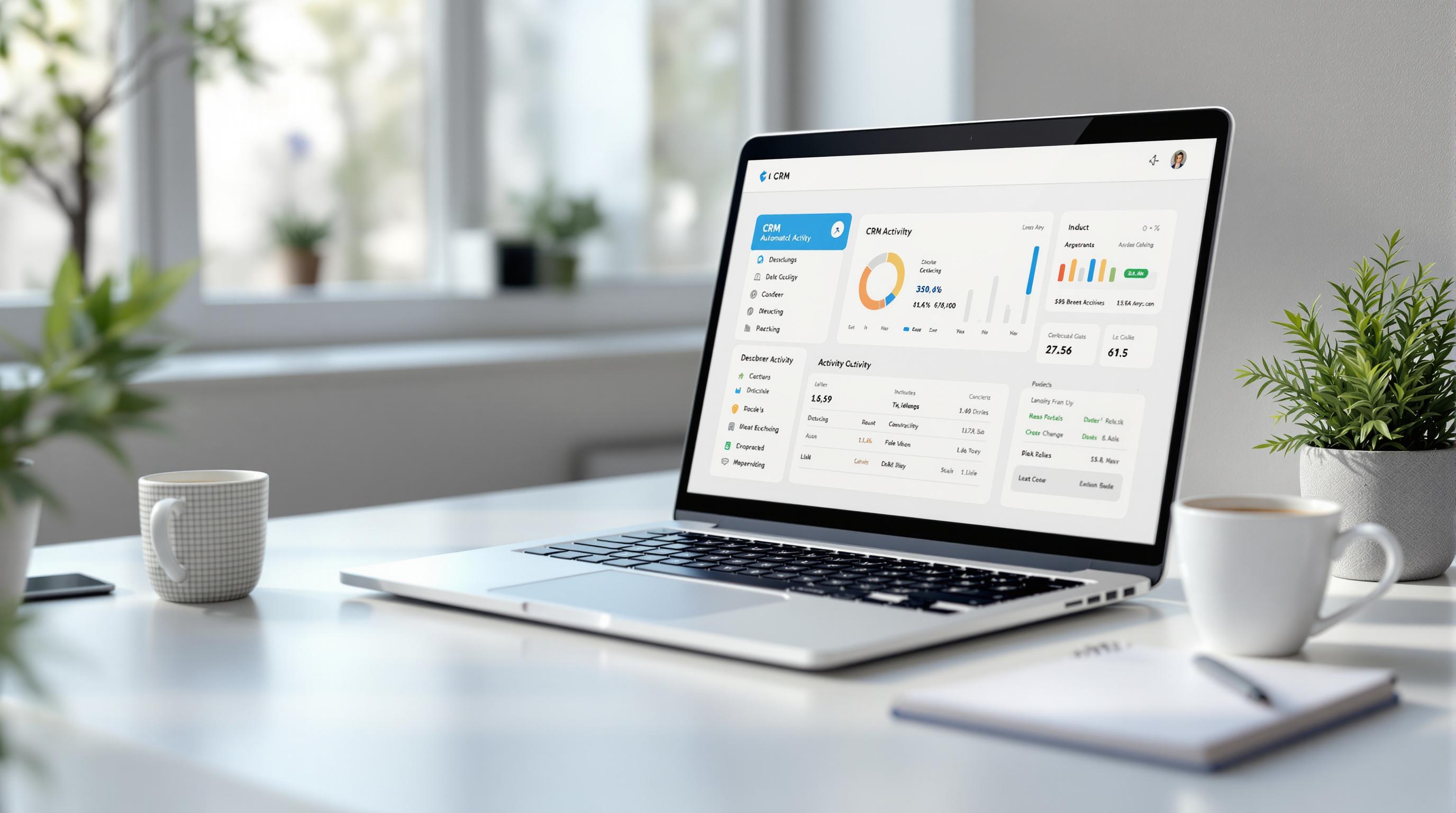AI is transforming demand forecasting by making it faster, more accurate, and better equipped to handle uncertainty. Businesses today face constant challenges like market shifts, supply chain disruptions, and unpredictable consumer behavior. Traditional methods relying on historical data often fall short. AI-powered scenario-based forecasting offers a smarter solution by simulating multiple "what-if" situations to prepare for various outcomes.
Key Takeaways:
- Scenario-based forecasting creates models for different market conditions (e.g., economic downturns, supply chain issues, demand spikes).
- AI advantages include speed, precision, and real-time adaptability, analyzing massive datasets like social media trends or economic indicators.
- Technologies used: Time series analysis, neural networks (e.g., LSTMs), ensemble methods, and machine learning-enhanced regression models.
- Real-time updates: AI continuously refines predictions based on new data, ensuring forecasts stay relevant.
- Risk management: AI detects anomalies, assigns confidence scores, and flags potential issues early.
By integrating AI with strong data systems, businesses can improve inventory management, align team strategies, and respond quickly to market changes. Tools like Hatrio Sales further enhance these capabilities by providing live data streams and sales insights, making AI-driven forecasting even more effective.
Forecast Forward: Optimizing Business Planning with AI-Driven Scenario Forecasting
AI Technologies Used in Scenario-Based Demand Forecasting
AI technologies bring together massive amounts of data, uncover patterns, and deliver predictions tailored to various scenarios. By understanding these technologies, businesses can make smarter choices when adopting AI-powered forecasting tools.
Main AI Methods for Forecasting
Time series analysis is at the core of most AI forecasting systems. Unlike older statistical methods, AI-driven time series models can handle irregularities, seasonal trends, and sudden market changes with a high degree of accuracy. These models are especially useful for industries where seasonal patterns or long-term cycles play a significant role.
Neural networks, particularly Long Short-Term Memory (LSTM) networks, are game-changers in processing sequential data. LSTMs can retain critical information from past events - weeks or even months ago - while analyzing current data. This makes them incredibly effective for juggling thousands of variables, like weather trends, economic shifts, and even social media sentiment.
Ensemble methods bring multiple AI models together to create stronger, more reliable predictions. By blending different approaches, these methods minimize the risk of errors from any single model, leading to more accurate results.
Machine learning-enhanced regression models go beyond the limitations of traditional regression techniques. They can uncover complex, non-linear relationships between variables, making them ideal for analyzing how factors like competitor pricing, marketing efforts, or broader economic conditions impact demand.
Together, these methods enable real-time data processing and enhance scenario testing capabilities.
Real-Time Data Processing and Scenario Testing
Modern AI systems are designed to continuously update forecasts with real-time data, revolutionizing how businesses handle scenario planning. They make it possible to test hypothetical situations instantly, providing a major advantage in dynamic markets.
Stream processing technologies allow AI to merge multiple data streams at once, offering a complete picture of the factors influencing demand. This constant flow of information enables businesses to refresh scenarios as frequently as needed - hourly or even more often during critical periods.
Dynamic scenario generation empowers companies to create and test "what-if" situations on the fly. Meanwhile, automated model retraining ensures that AI systems stay up to date with evolving market conditions. For instance, sales teams can simulate the impact of a competitor's price drop, and the AI system will automatically refine its algorithms based on actual outcomes.
This ability to adapt in real time also supports automated risk management, ensuring forecasts remain dependable.
Automated Problem Detection for Risk Management
Risk management is essential to maintaining accurate scenario-based demand forecasts, and AI excels at identifying potential issues before they escalate.
Pattern recognition algorithms monitor data quality and forecast performance, flagging any inconsistencies or unexpected trends. These alerts can signal data collection errors, market disruptions, or unusual events, allowing businesses to address problems early.
Outlier detection pinpoints data points that deviate significantly from the norm. Instead of simply discarding these anomalies, AI analyzes them to determine if they reflect genuine market changes or errors in the data. This approach helps preserve forecast accuracy while ensuring no critical market signals are missed.
Confidence scoring adds transparency by assigning reliability levels to different predictions. Businesses can see which forecasts are solid and which require further investigation. If confidence levels are low, it may prompt additional data collection or alternative forecasting strategies.
Risk assessment algorithms evaluate the potential fallout from forecast errors. They identify high-stakes scenarios where inaccuracies could be particularly costly, enabling businesses to focus resources on validating these predictions or preparing contingency plans.
How AI Improves Forecast Accuracy and Business Results
AI has transformed forecasting by enhancing accuracy, efficiency, and cost management, directly driving better business performance. By leveraging advanced algorithms, AI-powered forecasting tools provide businesses with sharper insights and a stronger competitive edge.
Better Accuracy and Lower Costs
AI-driven demand forecasting surpasses traditional methods by processing vast datasets and uncovering intricate patterns that humans might miss. This results in more dependable predictions.
With the ability to anticipate demand fluctuations, AI helps businesses optimize inventory levels, streamline production schedules, and refine workforce planning. By reducing both stockouts and overstocking, companies can improve profitability and make smarter use of working capital. Moreover, AI’s ability to quickly detect and adapt to changes in demand allows businesses to seize opportunities as they emerge.
Faster Decisions and Improved Team Coordination
AI facilitates rapid scenario planning, enabling quicker decision-making and smoother collaboration across departments. When teams like sales, marketing, operations, and finance rely on a unified, AI-generated forecast, their strategies align more effectively.
This shared real-time insight minimizes internal conflicts and ensures synchronized responses to market shifts. Automated alerts and reporting keep stakeholders informed of critical changes, empowering them to act promptly. By referencing a single source of demand projections, teams can make swift adjustments to plans, fostering agility and efficiency throughout the organization.
Standard vs. AI-Powered Forecasting Methods
The operational advantages of AI-powered forecasting stand in stark contrast to the limitations of traditional approaches. Here’s how they compare:
| Metric | Standard Forecasting | AI-Powered Forecasting |
|---|---|---|
| Forecast Accuracy | Moderate accuracy | High accuracy |
| Processing Speed | Slow for complex scenarios | Fast, even with complex scenarios |
| Data Sources | Limited to structured data | Combines structured and unstructured data |
| Scenario Testing | Manual testing of a few scenarios | Automated testing of numerous scenarios |
| Update Frequency | Periodic updates | Real-time, continuous updates |
| Cost per Forecast | Higher costs | Lower costs |
| Staff Requirements | Larger teams needed | Fewer experts required |
| Flexibility | Limited adaptability | Adjusts dynamically to new data |
| Risk Detection | Reactive to issues | Proactive in identifying risks |
This comparison highlights AI's ability to deliver consistent, scalable results. Beyond improving forecast accuracy, AI also reduces costs for implementation and upkeep. Its scalability is particularly beneficial for businesses expanding into new markets or managing increased complexity, as AI handles larger data volumes effortlessly with minimal additional investment.
sbb-itb-b22f30c
Setting Up AI for Scenario-Based Demand Forecasting
Once you've seen how AI can enhance forecasting accuracy, the next step is building the right setup to bring it to life. Success here isn't just about the technology - it's also about aligning your organization to make the most of AI's potential.
What You Need to Get Started
The backbone of effective AI-driven demand forecasting is clean, reliable historical data. This includes everything from sales records and inventory levels to promotional activities, seasonal trends, and external factors like economic conditions or weather patterns. Without this, AI models can't deliver accurate insights.
Equally important is seamless data integration. Most companies store information across several platforms - ERP systems, CRM tools, marketing software, and external sources. AI systems need direct access to all these data streams, which can be achieved through data warehousing or API integrations. This ensures real-time data flow and eliminates silos.
You'll also need strong computing power. Analyzing large datasets and running multiple scenarios requires significant resources. Cloud-based solutions are a great option here, offering the flexibility to scale up or down depending on your needs, all without hefty infrastructure costs.
But technology isn't enough. Cross-functional collaboration is critical. Finance teams provide budget insights, sales teams share market knowledge, operations define supply constraints, and IT ensures data security. Without this alignment, even the best AI tools can fall short.
Lastly, don't overlook change management. Employees may be skeptical of AI-generated predictions, especially if they challenge long-held assumptions. Providing targeted training and showing how AI complements their expertise can help build trust and foster adoption.
Making AI Work in Your Business
Once your infrastructure is ready, follow these best practices to integrate AI into your operations seamlessly.
Start small. Launch pilot programs focused on specific product lines or regions with strong historical data. This allows your team to learn how the system works, identify any issues, and refine processes before scaling up.
Remember that AI models aren't "set it and forget it." They need ongoing training and monitoring. Schedule regular reviews to compare forecasts with actual results, adjust parameters, and incorporate new data. Automated alerts can flag drops in accuracy or unusual trends, so you can address problems quickly.
To get the most out of AI, embed it into your existing workflows. For example:
- Sales teams can access demand forecasts directly in their CRM tools.
- Operations can link forecasts to production planning systems.
- Finance can use insights for budgeting and resource allocation.
When it comes to scenario-based forecasting, customize your models to reflect real-world decision-making. Simulate situations like new product launches, promotional campaigns, supply chain disruptions, or economic downturns. This helps teams evaluate options and make informed strategic decisions.
Finally, establish clear documentation and governance protocols. Define how models will be updated, how data quality will be checked, and who is responsible for system maintenance. This ensures consistent performance and avoids confusion down the line.
Start with simpler use cases - products with predictable demand patterns - before tackling more complex scenarios. This gradual approach allows your organization to build expertise while minimizing risks.
And don't just focus on forecast accuracy. Track broader metrics like inventory turnover or customer satisfaction to show how AI adds value across the business. This evidence can help justify future investments and reinforce the importance of your AI strategy.
Hatrio Sales: Supporting AI-Driven Demand Forecasting

Hatrio Sales takes AI-driven demand forecasting to the next level by ensuring the data fueling these advanced models is accurate, up-to-date, and seamlessly integrated. While AI handles the heavy lifting of forecasting calculations, Hatrio Sales ensures a steady flow of reliable data to keep predictions sharp and relevant.
Key Features for AI-Based Forecasting
At the heart of precise demand forecasting is real-time data processing. Hatrio Sales provides a constant stream of live sales and lead data, enabling AI models to make accurate, up-to-the-minute predictions. This uninterrupted data flow allows AI systems to adjust forecasts dynamically as new information comes in.
Real-time lead scoring adds another layer of intelligence by translating customer behavior into actionable insights. For example, when a high-value prospect shows increased activity or a previously dormant lead re-engages, these behavioral shifts are fed directly into the AI, offering a more nuanced view of potential sales trends that go beyond historical data.
The platform’s customizable CRM empowers businesses to test different sales scenarios through tailored workflows. Companies can set up automated processes triggered by specific market conditions and then analyze how these scenarios impact actual sales. This feature not only validates AI predictions but also fine-tunes them for improved accuracy.
Additionally, reporting and analytics dashboards transform raw data into visual and analytical formats that AI models can easily process. By automatically aggregating information from lead generation to deal closure, these dashboards provide a comprehensive view of the sales pipeline, making it easier to identify and analyze demand patterns. These tools ensure businesses are ready to scale their operations across diverse markets effortlessly.
Scalable Solutions for U.S. and Global Markets
Hatrio Sales is designed to handle the complexities of managing demand forecasting across various regions, each with its own unique customer behaviors and market trends. Its global lead management and database access allow businesses to track and analyze sales activities across both U.S. and international markets from a single platform, offering localized insights without added complexity.
For companies operating in multiple time zones, automated sales workflows ensure consistent and continuous data collection, no matter where or when sales activities occur. This steady influx of data is vital for AI systems to maintain accurate, real-time forecasting on a global scale.
The platform also includes lead enrichment and scoring tools that adapt to regional differences. For instance, what qualifies as a high-value lead in the U.S. manufacturing sector might differ significantly from one in European retail. By incorporating these regional nuances, AI models can better understand and predict demand patterns tailored to specific markets.
Supporting Flexible Sales Planning
Today’s fast-changing markets demand flexible and responsive sales planning. Hatrio Sales supports this adaptability with tools that capture live customer interactions and test different sales strategies. For instance, sales chat bots monitor customer engagement in real time, helping businesses identify emerging demand trends as they happen.
With drip campaign capabilities, companies can experiment with various messaging and timing strategies, tracking how these adjustments influence customer responses and, ultimately, demand forecasts. Meanwhile, deal closing support tools follow the customer journey from the first interaction to the final purchase, capturing detailed data that helps AI predict not just the likelihood of a sale but also its timing.
Conclusion: AI as the Future of Scenario-Based Demand Forecasting
AI has completely reshaped scenario-based demand forecasting, turning it from a manual, reactive process into a smart, forward-thinking system that revolutionizes how businesses handle demand planning and sales strategies.
By leveraging AI, businesses can achieve more precise forecasts, thanks to its ability to process a wide range of data sources - like market trends, economic changes, weather conditions, and even social media sentiment - that traditional methods struggle to manage effectively. AI doesn’t stop at broad predictions; it delivers highly detailed forecasts tailored to specific products, locations, and customer segments. This level of precision becomes essential in unpredictable markets, as AI’s continuous learning capabilities help forecasts adjust dynamically to changing conditions.
Automation also plays a key role, simplifying the forecasting process by reducing the need for manual effort. This allows companies to reallocate their workforce toward strategic tasks like analysis and decision-making. When paired with platforms like Hatrio Sales, which provide access to extensive global and local business data, these efficiencies become even more impactful. Such tools enhance the accuracy and reliability of forecasts, paving the way for more informed business decisions.
The integration of AI with strong data management systems is already driving results. Over 1,000 businesses worldwide are using these combined approaches to not only predict future demand but also to gain the agility and intelligence needed to succeed in dynamic markets. This fusion of advanced AI technology and comprehensive data systems represents the next step in scenario-based demand forecasting.
Adopting AI-driven forecasting isn't just an upgrade - it's a strategic move that empowers companies to stay ahead of market shifts and seize new opportunities as they arise.
FAQs
How does AI improve scenario-based demand forecasting for better inventory management?
AI-powered scenario-based demand forecasting is reshaping inventory management by boosting accuracy and efficiency. Studies reveal that AI can cut forecasting errors by up to 30% while increasing prediction accuracy by 25%. These improvements help businesses anticipate demand more effectively and fine-tune their stock levels.
By automating the intricate forecasting process, AI reduces the risks of overstocking and stockouts, slashing holding costs in the process. This approach not only curtails waste but also enables businesses to respond swiftly to shifting market trends, strengthening supply chain flexibility and reliability. With sharper insights, companies can make smarter, data-backed decisions that streamline operations and enhance profitability.
What AI technologies are best for processing real-time data in demand forecasting?
AI technologies, including machine learning, neural networks, and predictive analytics, play a powerful role in processing real-time data for demand forecasting. These tools allow systems to spot patterns, adjust to changes, and deliver more precise predictions.
On top of that, methods like time-series analysis and natural language processing (NLP) dig into historical data and external influences, such as market sentiment or news trends, to fine-tune forecasts. By using these advanced approaches, businesses can respond quickly with data-backed decisions to keep up with changing demands.
How can businesses keep AI-driven demand forecasts accurate during unpredictable market changes?
To keep AI-driven demand forecasts accurate during unpredictable market conditions, businesses should focus on real-time data integration and ensure forecasting models are frequently updated to align with changing trends. Incorporating external data - like economic indicators or weather patterns - can add valuable context, sharpening the accuracy of predictions.
Another key strategy is scenario planning. By exploring multiple demand scenarios, companies can better prepare for various potential outcomes. Advanced tools, such as machine learning algorithms, can further refine forecasts, while regular validation ensures the models remain dependable and actionable. Staying ahead of market shifts requires a proactive approach and a readiness to adjust strategies as needed.



